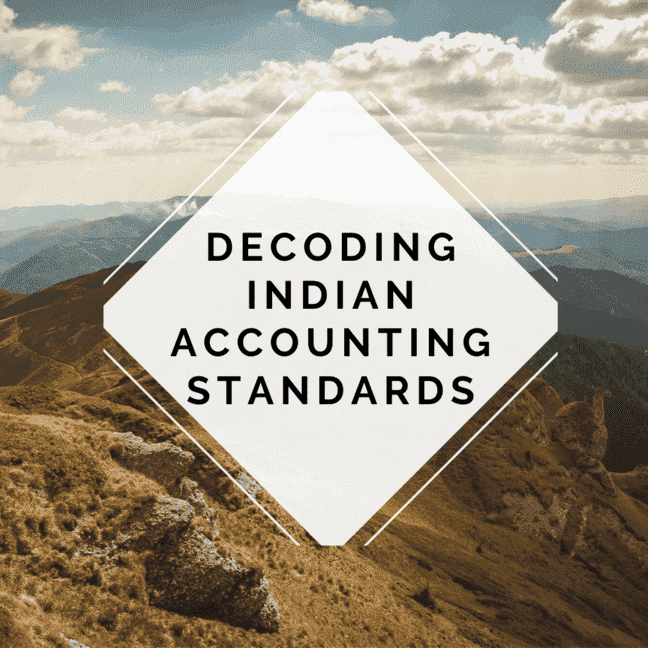

In part 1 of Ind AS 1 we covered the objectives, Relevance, Role and basic points to be remebered while implementing. In this section we will cover the Key paragraphs, Disclosures oriented paragraphs and Carve Outs between Ind AS 1 and IAS 1.
Key Paragraphs of Ind AS 1
List of minimum line items that has to be presented under each component of financial statements:
(a) property, plant and equipment;
(b) investment property;
(c) intangible assets;
(d) financial assets (excluding amounts shown under (e), (h) and (i));
(e) investments accounted for using the equity method;
(f) biological assets within the scope of Ind AS 41 Agriculture;
(g) inventories;
(h) trade and other receivables;
(i) cash and cash equivalents;
(j) the total of assets classified as held for sale and assets included in disposal groups classified as held for sale in accordance with Ind AS 105, Non-current Assets Held for Sale and Discontinued Operations;
(k) trade and other payables;
(l) provisions;
(m) financial liabilities (excluding amounts shown under (k) and (l));
(n) liabilities and assets for current tax, as defined in Ind AS 12, Income Taxes;
(o) deferred tax liabilities and deferred tax assets, as defined in Ind AS 12;
(p) liabilities included in disposal groups classified as held for sale in accordance with Ind AS 105;
(q) non-controlling interests, presented within equity; and
(r) issued capital and reserves attributable to owners of the parent.
(a) Revenue, Interest revenue calculated using effective interest income separately;
(b) Gains or losses arising from derecognition of financial assets valued at amortised cost;
(c) Finance costs;
(d) Impairment losses (including any reversals);
(e) Share of profit or loss of associate/ joint ventures accounted for using the equity method;
(f) Any gain or loss arising due to reclassification of financial asset from amortised cost method to fair value through Profit and Loss (FVTPL);
(g) Any cumulative gain being previously recognised in other comprehensive income now to be reclassified in profit and loss due to reclassification of financial asset from Fair value through other comprehensive Income (FVTOCI) to FVTPL;
(h) Tax Expense;
(i) Single amount for the total discontinued operations;
(j) Allocation of Profit & loss and other comprehensive income to non-controlling interest and owners.
Classification of Current & Non-current Assets & liabilities
Assets to be classified as current when: [Para 66]
- Expected to be realised or Intended to be sold during the normal operating cycle, or
- Asset is cash or cash equivalent.
- Asset is expected to be realised within 12 months after the reporting period, or
- Asset is being hold primarily for trading purpose, or
All other assets shall be classified as Non-current.
Liabilities to be classified as current when: [Para 69]
- Expected to be settled within normal operating cycle, or
- Liability having no right to defer settlement for at least 12 months after the reporting period.
- Liability is expected to be realised within 12 months after the reporting period, or
- Liability is being hold primarily for trading purpose, or
All other liabilities shall be classified as Non-current.
Disclosure Oriented Paragraphs
(a) Financial statements present a true and fair view of entity’s financial position, financial performance and cash flows
(b) Compliance with regards to all other Ind AS except the one it has departed is assured.
(c) Title of the Ind AS, Nature of Departure, Reason for such departure and the treatment adopted.
(d) Financial impact of such departure on each item in the financial statements.
(a) The nature of reclassification
(b) The amount of item reclassified
(c) The reason for reclassification.
What are the Carve Outs between Ind AS 1 & IAS 1?
This is where our Ind AS 1 come to end, hope you like the blog, any sugestions or improvements are accepted with great love, eager to hear from you in the comment section below
A quick Disclaimer, any information containing in this blog is not, in any aspect, to be considered as exhaustive explanation of the accounting standard; the key paragraphs, disclosure or carve outs are distributed and presented according to my personal judgement, ergo, optimum prudence should be maintained while complying with this Ind AS